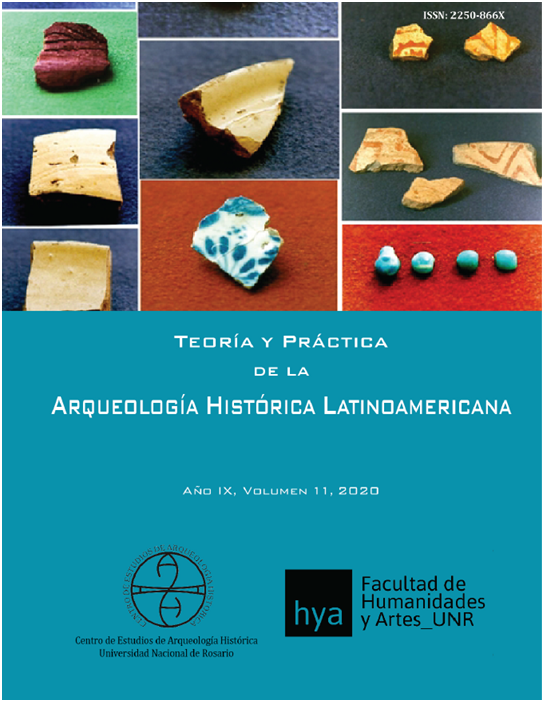Las Caleras Rosarinas S.A. (1891-1927). Rosario, Argentina. Del plano urbano a la materialidad perdida
DOI:
https://doi.org/10.35305/tpahl.vi11.97Palavras-chave:
arqueología urbana, arqueología industrial, capitalismo, RosarioResumo
A fines del siglo XIX, el crecimiento habitacional rosarino, por el saldo inmigratorio, implicó también un crecimiento urbano por extensión. La construcción de edificios –domésticos o públicos y de diferentes calidades, también requería de ingentes cantidades de material de construcción. Uno de estos materiales, usado universalmente aún hoy, era la cal. Los procesos de fabricación de cal necesitaban de espacios amplios, depósitos, hornos, agua en abundancia y un sistema de distribución, tanto de la materia prima –el carbonato de calcio- como del producto terminado: la cal, lista para ser usada. En base a un antiguo plano de 1899, se localizó en Rosario una calera que se había perdido, tanto en su materialidad original como en la memoria popular, e incluso en los documentos históricos. Los restos hallados en 2018 permitieron visibilizar arqueológicamente esa pérdida y mediante una investigación actualmente en curso, definir su importancia industrial. El objetivo de este trabajo es presentar el caso de las CALERAS ROSARINAS S.A. (c.1896 – c. 1927), como sitio articulado a procesos de cambio socioeconómicos y evidenciar (y reflexionar) cómo esos mismos cambios promovieron su desaparición.







